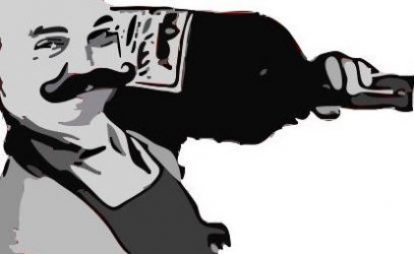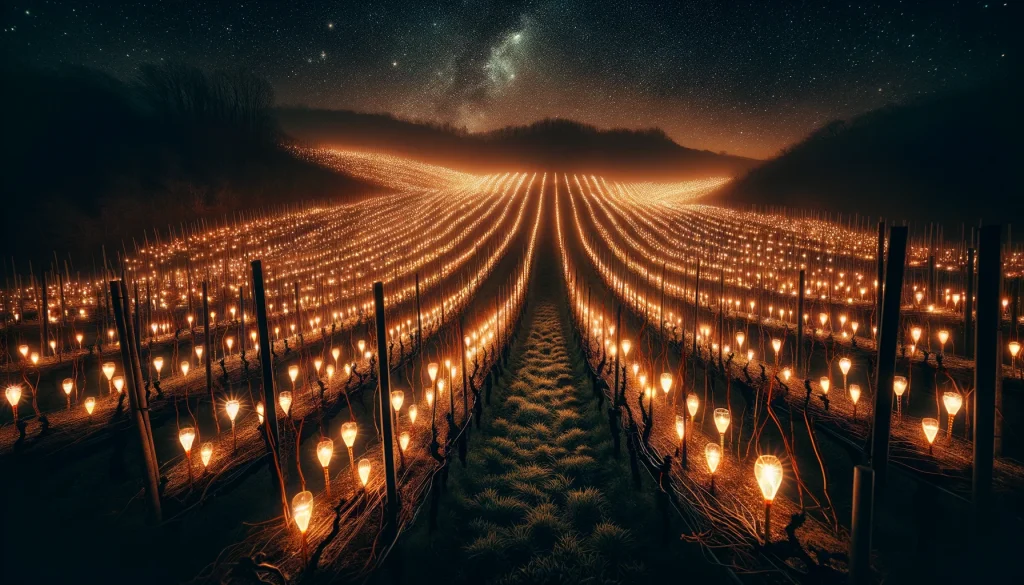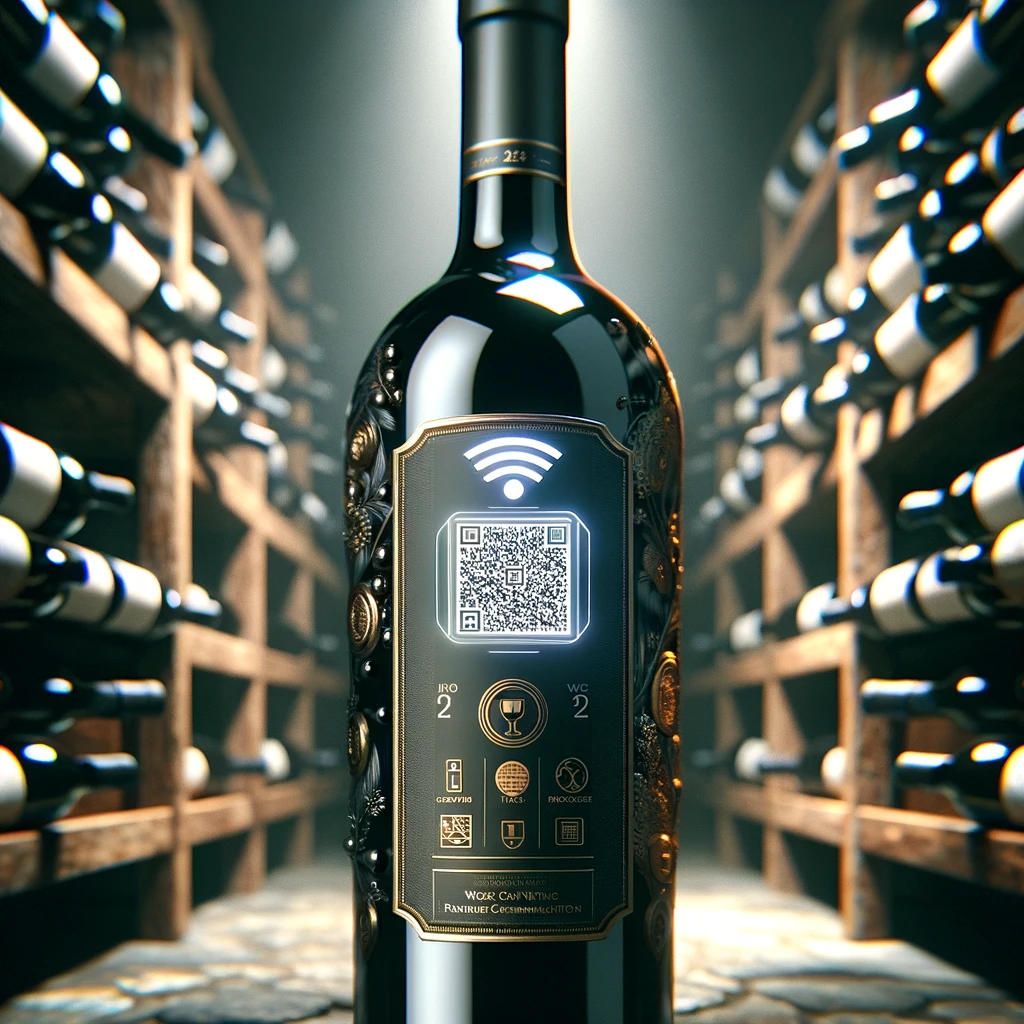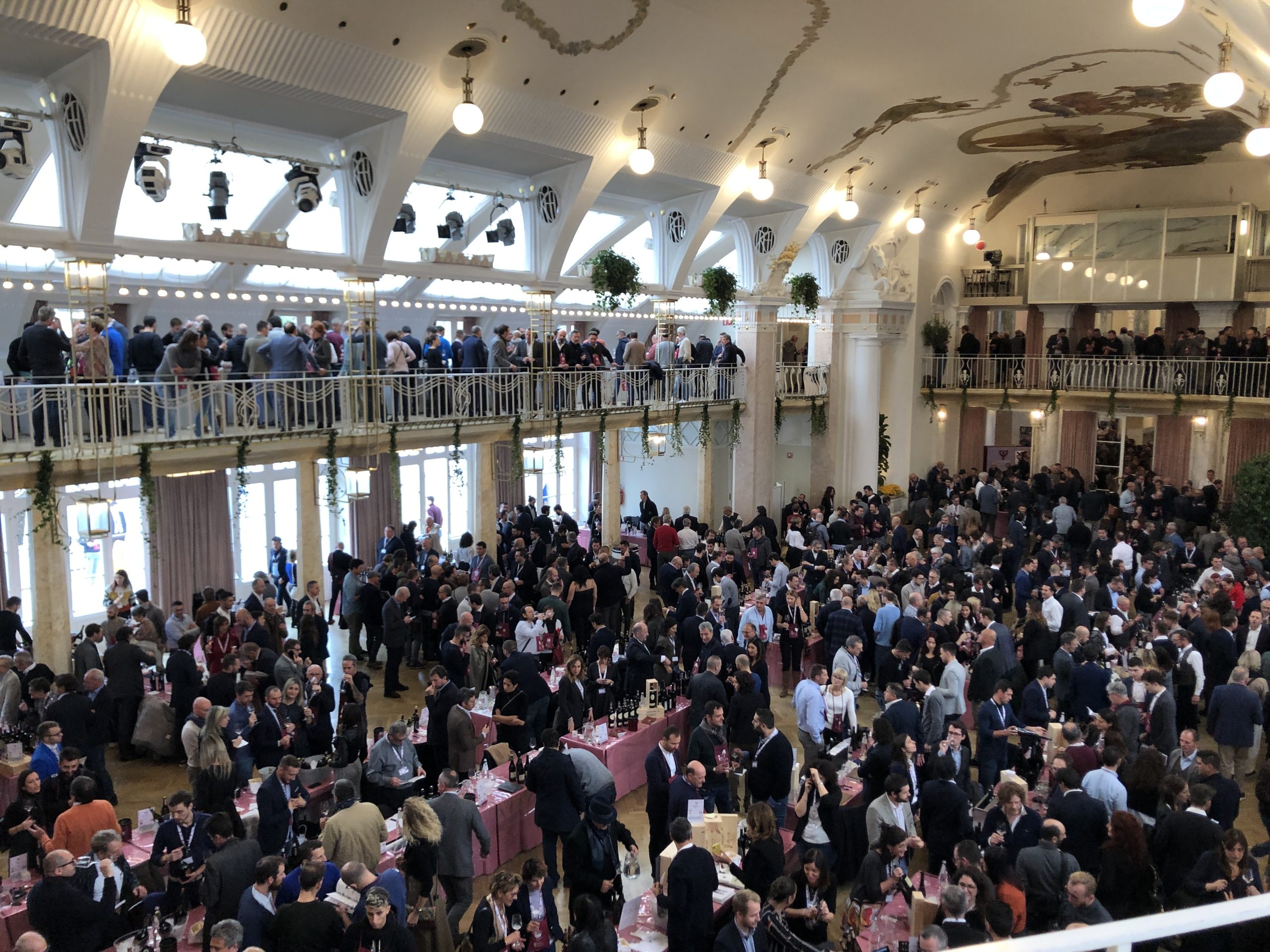As the warm sun of early March casts its glow over the place I call home these days, hints of spring are already in the air, inviting tourists and locals alike to bask in its warmth. This shift in seasons might feel welcoming, but a glance towards the snow-capped mountains surrounding the city serves as a cold reminder: winter’s grip hasn’t fully loosened. The stark contrast between the seasonal warmth and the looming threat of frost brings to mind the harsh realities faced by vineyard owners. In light of actual events, here is an overview of the ingenious and diverse methods vineyards employ to protect their precious vines from the capriciousness of nature.
Frost Wars: Nature’s Challenge, Vineyards’ Response
It is early March in Bolzano, the capital of South Tyrol, and it already feels like Spring. During the day you could easily sit in the sun just wearing a T-shirt on the city’s main square and, in fact, many tourists do. While I might find this a little premature for my taste, I cannot deny that the change of season is already upon us. Fast forward two weeks and I look out of my office window. It has been raining most of the day and as it clears up, I see that the mountains surrounding me are covered with a fresh layer of snow. At least from a certain height up on. The snow line is probably still too high up, but it serves as a reminder that technically it is still winter. And even it is the change of the season later this week, we must not forget that the risk of frost looms large.
Only three years ago, in a severe blow to the Burgundy wine region, widespread frosts in April caused significant damage across the area from Chablis in the north to Mâconnais in the south. The severity of impact varying across the region, the damage was particularly notable in the prestigious Côte d’Or region with losses mounting up to 80% in some cases due to the weather conditions (and mildew further down the line).
Ice
I know that there are several ways to fight frost: I have seen sprinklers that take advantage of the heat released during the freezing process. By spraying water over the vines, it freezes into a protective ice layer around new shoots. This transformation from liquid to solid releases latent heat, safeguarding the shoots within an icy shield. However, timing is everything with this technique as the sprinkler systems have to be activated before the frost arrives. Being just a little too late would make matters much worse.
Wind
In another way to protect their vineyards from frost, many growers are using creative methods like fans and helicopters. These tools help by moving warmer air down to the vines, which pushes away the cold air that can damage the plants. Fans are set up around the vineyards to keep the air moving, while helicopters fly low to push warm air from above onto the crops. This technique is a smart way to keep the vines safe from frost, showing just how much effort vineyard owners put into protecting their harvest. Using airflow in this way helps create a better environment for the vines, making sure the cold doesn’t ruin the grapes.
Fire
The weapon of choice often remains, of course, fire to combat frost and despite the seriousness of the matter, the images of are both haunting and beautiful (check out the pictures in this article to see what I mean). Fire, while a powerful tool, demands respect and careful handling, especially in the context of agriculture. A friend from Geisenheim University shared insights into how many growers are combating frost by heating their vineyards with either fossil or biogenic fuels. This approach, particularly the use of frost candles, has become increasingly popular despite the challenges of securing them on short notice and the substantial costs involved. Around 200 candles per hectare are typically required, which can quickly escalate costs, potentially turning a profitable season into a financial setback after several frosty nights. To enhance this method, vineyards have integrated temperature sensors for more precise control, activating frost defenses only when absolutely necessary. This tech-driven solution depends on accurate temperature measurements, ongoing data transmission, and timely alerts to mobile devices, although its true effectiveness can only be assessed post-frost. Now, apart from the risk of playing with fire, there is also the aspect of environmental responsibility, which has seen a shift towards renewable fuel sources like pellets, briquettes, and wood chips, moving away from fossil fuels. This green transition requires more than just a basic heater; advanced ovens with controlled airflows are necessary for even combustion. Although these ovens are an investment compared to one-use buckets, they offer consistent heat, are easier to manage, and are more storage-efficient. Despite pellets being more expensive, they are favored for their steady burn, highlighting the balance between operational efficiency and sustainability in frost management. In the end, it is an investment that pays off, I was told.
Weapons of Choice
In conclusion, it’s clear that regardless of the tactics employed, the threat of frost remains a constant concern in the face of climate change. With earlier blooming now more common due to warmer temperatures, and unpredictable weather making spring frosts more likely, these cold snaps are no longer rare occurrences but expected challenges. This reality forces vineyard owners to be more vigilant and innovative in protecting their vines. Adapting to this new normal requires a blend of modern technology and time-tested methods, highlighting the ongoing need for resilience and sustainable practices to ensure the continued production of high-quality wines.




